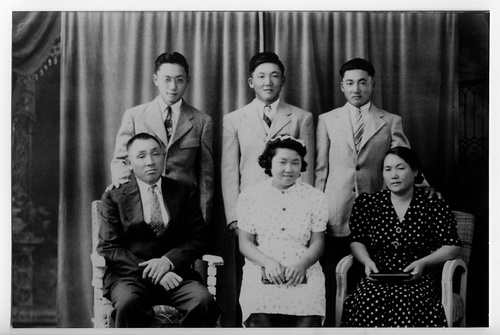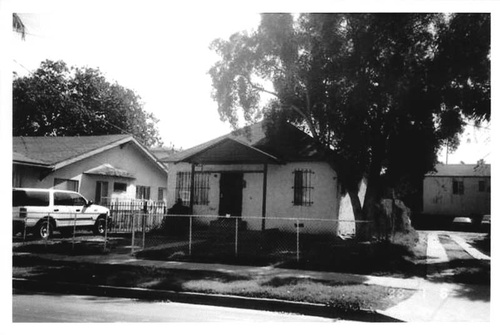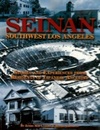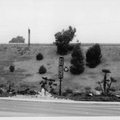The Shinmoto family history in America dates back to 1923, when Tsuneo Anthony (Tony), then five months old, and his father, Tsunetaro (1897-1972) and mother, Haruyo Tanaka Shinmoto (1902-1982) landed in San Francisco from Hiroshima, Japan. The new arrivals moved south to Upland, California, where second and third sons, Kiyoto (Herky) and Minoru (Min) were born in 1924 and 1925, respectively. Then to Salinas, where their fourth son, Hiroshi was born. The next move was to Kingsburg, a small farming community about 20 miles south of Fresno, where daughter, Mitsuko (Mitsy) was born.

Around 1929, the family moved to the Uptown area in Los Angeles, where Hiroshi (1927-1929) died at the age of 2½ years old of spinal meningitis. He had contracted the illness from a family friend who had stayed overnight, by sleeping in the same bed with him.
In the early 1930s, the family moved to the Seinan (Southwest Los Angeles) area, where the kids attended the 37th Street School and Foshay Junior High School. Tony attended Manual Arts High School. After public school let out in the afternoon, they attended Senshin Japanese Language School for one hour each day during the week. Homework for both schools was done after every dinner, which left little time for play.
Only during summer, was there time away from studies. The older children in our family helped father with his gardening work every Saturday throughout the year and most summer days. There was also work at the local nurseries (Iba Nursery and Mr. Watanabe’s Western Avenue Park Nursery). The Shinmoto family moved back to Kingsburg during the summer of 1939 because we were not able to make ends meet in Los Angeles.

Relatives helped to make life easier. Japanese School on Saturdays felt like a picnic. My siblings and I helped earn extra money for the family by doing farm work after school. Temperatures over 100 degrees in the fields during the summer made the prospect of going back to school a happy one.
Tony graduated from Kingsburg High School in June 1941. Instead of continuing his education at the local college, he was content with the family’s purchase of a new, lime green Chevrolet sedan rather than that money being spent on his education. All dreams of a secure future appeared to come to an end on Sunday, December 7th, 1941.
President Franklin D. Roosevelt’s Executive Order 9066 forced the family’s newly purchased Chevy to be sold at a fraction of its purchase price. Herky cried after having to give up his 500 pound hog that had been raised under the high school’s Future Farmers Association (FFA) program from a little piglet. The unforeseen future held little hope for a better life for the Shinmoto family.
* * *
*Editor’s note: “Seinan” is an area in Southwest Los Angeles, California, where a thriving Japanese American community existed before World War II. Japanese American Living Legacy has gathered stories and personal experiences from people who lived in Seinan before World War II. This article presents an excerpt from the book Seinan: Southwest Los Angeles, Stories and Experiences from Residents of Japanese Ancestry (2011) published by JA Living Legacy.
* * *
SEINAN PANEL
Sunday, October 30, 2011 • 2pm
Japanese American National Museum
Come hear how Southwest Los Angeles was a thriving Nisei community that was almost wiped out with the forced removal and events of World War II.
Presented in collaboration with JA Living Legacy and the Japanese American National Museum.
© 2011 Japanese American Living Legacy





